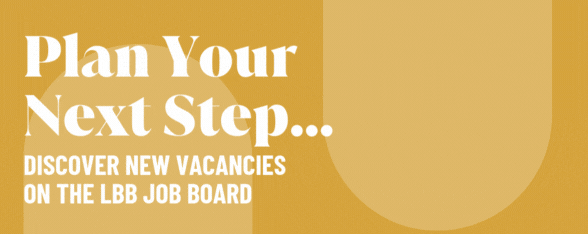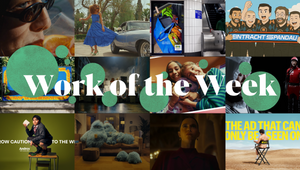
Finely Sliced: Illustrating the Rhythmic Evolution with Martin Leroy

Martin Leroy is a Belgian film editor based in Los Angeles. He studied editing in Brussels and his graduation film was selected for the Cannes Film Festival. In Belgium he was a freelance editor on commercials, documentaries and short films for more than a decade. His film 'The Lobster's Cry' won a César for Best Short Film in 2012. The relationships he developed with directors like Raf Wathion, Jow Vanhoutteghem, Arnaud Uyttenhove and production companies like CZAR and Caviar quickly took him around the world.
In 2014 Martin moved to Los Angeles and joined the Whitehouse roster for 8 years. His passion for visual storytelling has had him work with many established US directors and agencies on brands like Nissan, Universal, Lexus, Intel, Ikea, Coca Cola, BMW and Audi - always preserving his European sensibility. He is now represented by Work for the US and UK markets.
LBB> The first cut is the deepest: how do you like to start an editing project?
Martin> It has to start with a double shot of espresso, always! When that’s done I dive into a deep study of the material. I watch everything at real speed, pull my selects out and organise them methodically. I try to keep an open mind at this stage and look for anything unplanned that could make the edit more interesting: mistakes, outtakes, textures, etc. I have a few playlists that I shuffle while screening. It often teaches me in what direction to search for music. Selecting is a very important step for me. It can feel a bit serious at times but I need those solid foundations so the rest of the edit process can be more free and chaotic.
LBB> Non-editors often think of editing just in technical terms but it’s integral to the emotion and mood of a film. How did you develop that side of your craft?
Martin> I found out that art and life experiences are what infuses my work with emotions. So I try to read, go see shows and travel as much as I can. Photo books are a big source of inspiration and watching a lot of movies also helps of course. (The Criterion Channel is my favourite thing on the internet).
LBB> How important is an understanding of story and the mechanics of story?
Martin> “We tell ourselves stories in order to live” as Joan Didion wrote. Storytelling is inherent to human nature, it’s everywhere and I find it fascinating. When I’m stuck on a scene I always try to go back to the story, find its essence. The solution always lies there. Even for visual films, it’s all about the story.
LBB> Rhythm and a sense of musicality seem to be intrinsic to good editing (even when it’s a film without actual music) – how do you think about the rhythm side of editing, how do you feel out the beats of a scene or a spot? And do you like to cut to music?
Martin> Rhythm is such a powerful emotional tool. You can use it to surprise, create unease and exhilarate. Before I start cutting I usually doodle some kind of waveform to illustrate the rhythmic evolution I’m trying to create. I wouldn’t say that I like to “cut to music” but I use music, and sound in general, a lot in my edits if that makes sense.
LBB> Tell us about a recent editing project that involved some interesting creative challenges.
Martin> I’m currently wrapping up the edit of a short film Arnaud Uyttenhove shot in Tahiti. It’s a bit unconventional. The script was kind of loose, the cast was mostly non-actors and there was a lot of improvisation. The rushes are stunning but we had to completely rewrite the film in the edit room and develop a “language” to compensate for some narrative shortcomings. It was a very long and challenging exercise but I really enjoyed it and I’m very happy how it turned out. I can’t wait for it to be out in the world.
LBB> How important is your relationship with the director and how do you approach difficult conversations when there is a creative difference of opinion?
Martin> The creative intimacy that you can develop with a director may be my favourite part about being an editor. Artistic collaborations can be so nurturing. And I always try to use differences of opinions to improve the piece. The solution to the other person’s comment needs to make the edit better for me as well.
LBB> What’s harder to cut around – too much material or not enough? (And why?)
Martin> Not enough for sure! Too many dailies can feel overwhelming but making up for what’s not there is sometimes impossible.
LBB> Which commercial projects are you proudest of and why?
Martin> I love working with Joe Vanhoutteghem. He is an incredible artist and I have learned a lot working with him over the years. I ‘m really happy with the Belgian Railway spot we did together last year.
LBB> There are so many different platforms for film content now, and even in advertising something can last anything from a few seconds to a couple of hours. As an editor, are you seeing a change in the kind of projects you’re getting from brands and agencies?
Martin> I always found the 30 or 60 seconds TV formats so limiting. We’re seeing less of it and I’m not mad about it. Longer forms open up so much more possibilities for better storytelling.
LBB> Who are your editing heroes and why? What films or spots epitomise good editing for you?
Martin> The sensorial quality of Mary Sweeney and David Lynch’s editing on ‘Twin Peaks’ and ‘Lost Highway’ is a big reference for me. And I connect with Joe Walker’s work a lot. The tension he brings to Villeneuve’s film, the rhythm, and his clever approach to certain scenes. Tight! In the commercial world, I find Rich Orrick especially inspiring. I sometimes have to watch his edits over and over to fully understand what he did. I’m also impressed how editors like Neil Smith, Stewart Reeves or Tom Lindsay constantly deliver extremely good work.
LBB> How does editing in the commercial world differ from the film world and TV world?
Martin> Commercials are quick and fun, it’s more about the style, the aesthetic and you can use visual tricks to cheat. Longer narrative forms require a different approach. You always need to keep the bigger picture in mind. And if you don’t get your story or your character evolution right people just won’t buy it. No matter how pretty it looks.
LBB> Have you noticed any trends or changes in commercial editing over recent years?
Martin> It’s funny to see the new trends turn into gimmicks and then change over the years. The editing I like is one that you don’t really notice. It’s subtle and timeless, just there to serve the idea. We’re in a tricky time creatively, some kind of transition period I guess. But I also see young filmmakers and editors with a lot of talent and energy. You can feel an aspiration to create more meaningful, conscious and diverse content and I really hope we can move in that direction.















